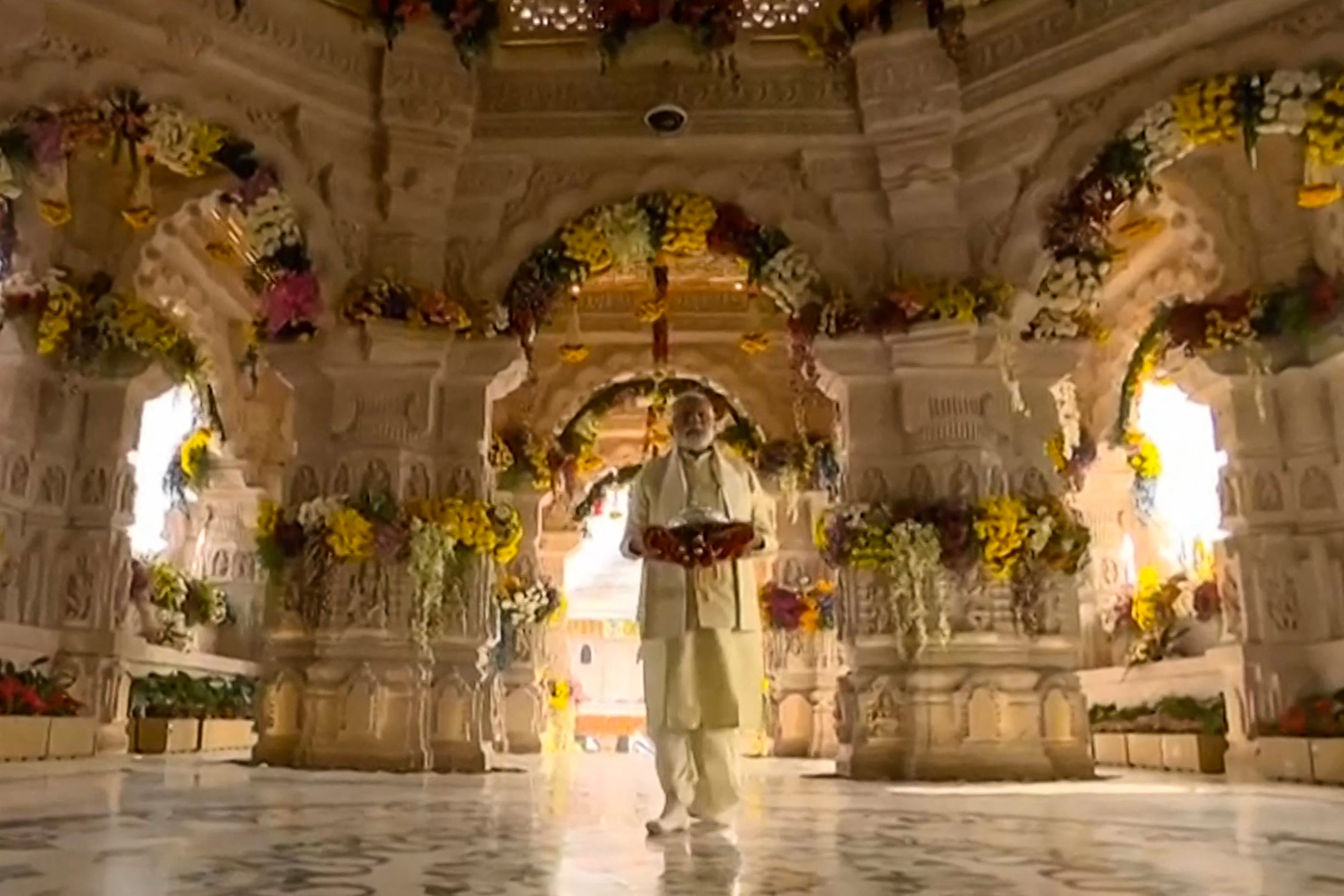Why Modi’s BJP was defeated in Ayodhya where they built a grand temple to Lord Ram
The temple, built over a razed mosque, was thought to be the project that would guarantee a landslide for Modi’s BJP in the 2024 general elections
In January this year, a galaxy of India’s celebrities, including billionaire families, cricketers, and actors, landed at the holy city of Ayodhya in India’s north to attend the “once-in-a-lifetime” consecration ceremony of a grand temple to Hindu deity Lord Ram.
The temple, built over a razed mosque, was thought to be the project that would seal Narendra Modi‘s rare third term as India’s prime minister and guarantee a landslide for his Hindu nationalist Bharatiya Janata Party (BJP) in the May elections.
On Tuesday, as votes were being counted, it became clear that Faizabad, the constituency that is home to Ayodhya and the Lord Ram temple, had resoundingly rejected the BJP, much to the astonishment of not only the political outfit but also many Hindus across social media.
“UP (Uttar Pradesh) is a puzzle but Ayodhya is even worse. I’m scratching my head over the BJP’s loss in Ayodhya. They’ve got temples, hotels, jobs, and an airport – what more do they need? Thoughts?” wrote user Narayanan Hariharan on X, formerly Twitter. Uttar Pradesh is the BJP-ruled state where Ayodhya – thought to be the birthplace of Lord Ram – is situated.
A day later, a clearer picture emerged from the ground that addresses some of the bafflement.
With Ayodhya, Mr Modi was making a disastrous political calculation – one that is going down as a notable defeat in India’s history, political experts say.
The Hindu leader left no stone unturned in the inauguration of the temple. Rose petals were showered from a helicopter and an airport built in the city to accomodate the increased flight traffic. Locals were allowed in after the rich and famous left.
Spread over nearly 7.4 acres, the temple – which is still being built – has an estimated cost of £170m. It’s made with pink sandstone and has 46 doors, 42 of which will have a layer of gold. A 1.3m dark stone sculpture depicting Ram was installed in the temple’s inner sanctum.
But just a few kilometres away were people displaced from their homes as Ayodhya got a “facelift” for BJP’s ambitious plan of making it a Hindu Vatican City. Videos showed nursing mothers squatting by the roadside, the lament of elderly citizens, and houses, shops and settlements destroyed as Mr Modi’s state authorities buldozed the area.


This temple came at a heavy price for Ayodhya residents, said Urmilesh, an Indian journalist and author who spent weeks in Ayodhya in the run up to the elections.
“Especially for those living around the temple, who are still recovering from the loss of their homes, their sanctuaries which the government reduced to a debris only so that the billionaires and the country’s rich could reach the site of temple inauguration,” he told The Independent. No fair compensation has been given to the locals, some of whom are still waiting for it, he said.
A local told him how a new corridor planned for better facilitation of pilgrimage, disrupted the livelihoods of hundreds of families and did not yield commensurate compensation.
Even a Hindu in Ayodhya believes that Lord Ram lives in homes and hearts, not on streets demolished for ostentatious political display, said Mr Urmilesh, who used only his first name.
Ram Mandir was inaugurated just three months before India went to polls, cementing the belief that Ayodhya can fetch most of Hindu votes across the country. The victory was ultimately clinched by opposition socialist Samajwadi Party (SP) and its veteran candidate Awadhesh Prasad, a Dalit.

Faizabad is home to a large section of Dalits – relegated to the bottom rung of the Indian caste hierarchy.
“For decades, Ayodhya has resoundingly rejected any political party that has tried to drive a wedge with its extremist policies, like this time because of Mr Modi’s religious pitch,” says social activist Suryakant Pandey from Faizabad. “It’s a curse”.
Mr Modi’s candidate Lallu Yadav, a two-time sitting lawmaker, lost by a heavy margin of 54,567 votes to Mr Prasad.
Faizabad’s demographic, with its prominent minority population, also took speeches targeting Muslims by Mr Modi as a direct threat to India’s secular and pluralistic democracy. A direct call to change India’s constitution was made by Mr Yadav in a pre-poll campaign speech.
“The minority section was fed up with Modi’s threats and understood that the BJP can actually diminish them if it manages a power return. They kept quiet after January and responded with a ballot box,” Mr Pandey, who witnessed the demolition of Babri mosque, said.
Mr Urmilesh, who has closely monitored Ayodhya’s political journey, said the promises of airports, millions of investment and big infrastructure projects mean nothing to locals if you take away their roof and food. The Indian leaders said the Ayodhya temple project would fetch them Rs850bn (£7bn) in investment.
“The locals here do not care for an airport or malls, they mostly live hand to mouth and mind their business. You cannot come one day, take their roof and dangle a shiny temple when they have nowhere to go,” he told The Independent.
“It is an attack on their dignified right to exist.”
Join our commenting forum
Join thought-provoking conversations, follow other Independent readers and see their replies
Comments


Bookmark popover
Removed from bookmarks